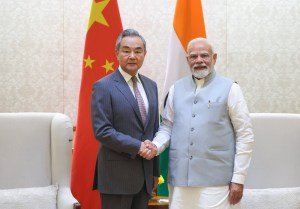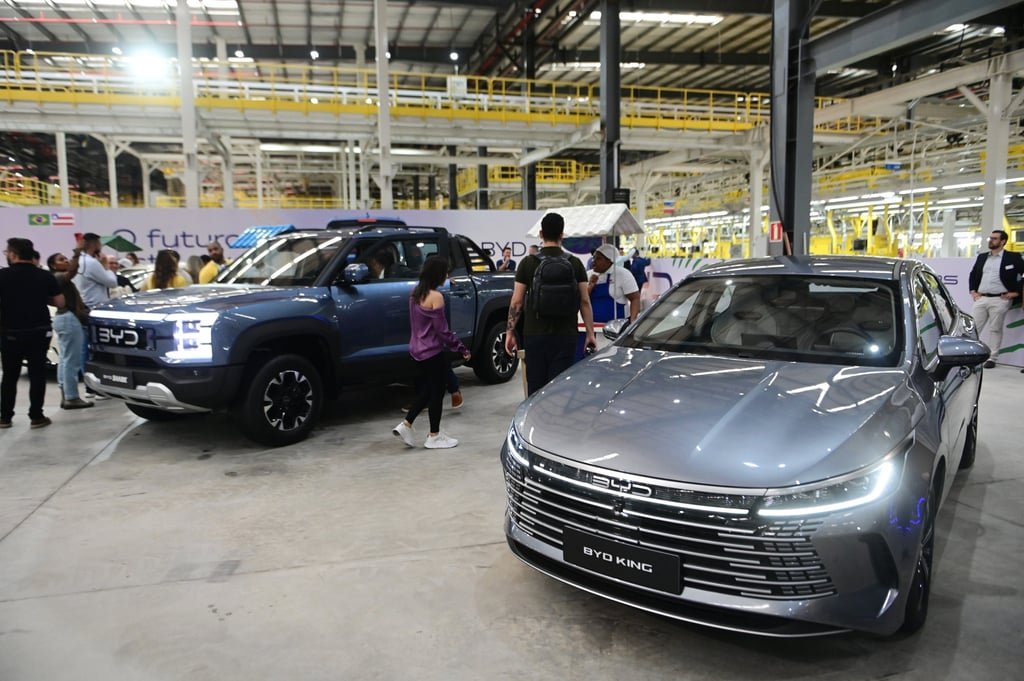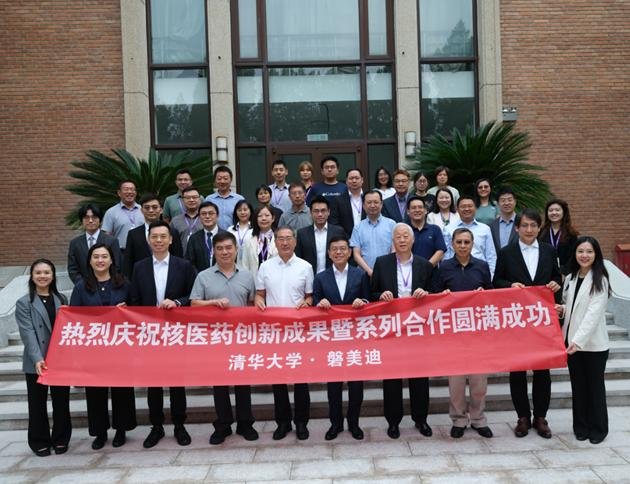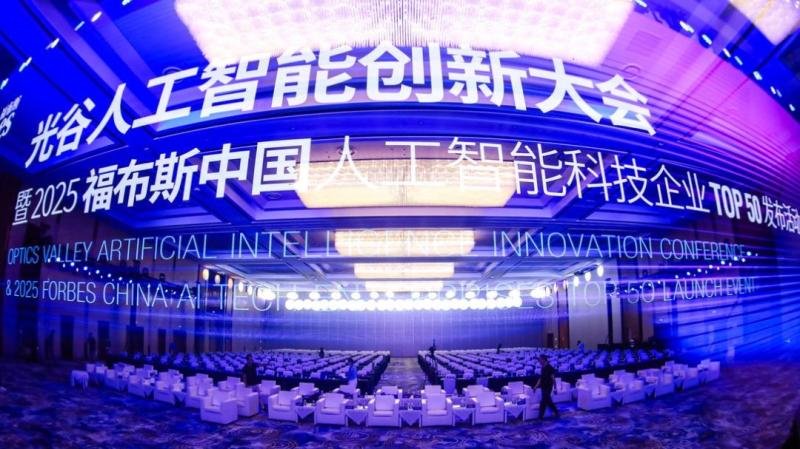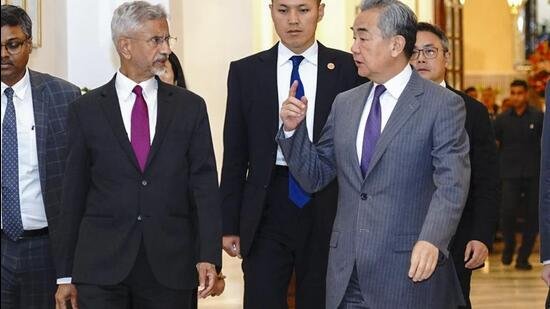The breakthrough follows talks last month between External Affairs Minister S Jaishankar and Chinese Foreign Minister Wang Yi. On his current two-day visit to India, Wang assured Jaishankar that Beijing had already acted on New Delhi’s requests, with shipments of the restricted items understood to be underway, according to officials.
The development points to a pragmatic recalibration in ties. Both countries recognise that cooperation in critical sectors can ease supply chain pressures and create room for stability in an uncertain global order. Rather than a reset born of sentiment, this is a calculated opening: collaborate where interests align, manage differences carefully, and build predictability into a fraught relationship.
Why the thaw now
Relations between Washington and New Delhi soured after President Donald Trump moved to double tariffs on Indian goods to 50%, including an extra 25% hit linked to India’s purchases of Russian oil.
Also Read: China lifts curbs on fertilisers, rare earths & tunnel boring machines to India

Live Events
The rupture threatens years of growing alignment in tech and security meant to check China.Beijing, meanwhile, has every reason to welcome the friction.Manoj Kewalramani of the Takshashila Institution told the New York Times there’s “a certain amount of schadenfreude” in Beijing. “A breakdown of political trust between New Delhi and Washington works in Beijing’s favour.”
A cautious diplomatic reopening
Since Xi Jinping and Narendra Modi met on the sidelines of the BRICS summit in Kazan (October 2024), the two sides have ticked off confidence-building steps NYT and Economic Times both spotlight: easing visa restrictions, discussing direct flights and re-opening religious pilgrimages.
China allowed Indian pilgrims to visit sites in Tibet in June; India, for its part, resumed issuing tourist visas to Chinese nationals on 24 July after a five-year freeze.
Beijing’s envoy Xu Feihong even posted an open invitation to Indians on X. Both sides are also discussing reopening three border trading posts and “additional practical steps” to restore connectivity.
Chinese Foreign Minister Wang Yi is in India on a two-day visit, his first in over three years, to meet External Affairs Minister S. Jaishankar. The trip could also set the stage for Prime Minister Narendra Modi’s first visit to China in seven years, for a regional summit in Tianjin that will be attended by Xi Jinping and Vladimir Putin, according to the New York Times.
Also Read: PM Modi to meet China’s top diplomat Wang Yi as Asian powers rebuild ties
Yet a favourable sentiment remains absent, as Beijing continues to strengthen roads, rail links and border villages along the frontier, while both capitals intensify their competition across the Indian Ocean.
The manufacturing reality Delhi can’t ignore
Amitabh Kant, former G20 Sherpa, ex-NITI Aayog CEO, and the architect of India’s production-linked incentive (PLI) schemes, laid out the uncomfortable truth in a CNBC-TV18 interview.
“India should get China to manufacture with us. We need joint ventures with China, especially for components and a wide range of inputs that go into manufacturing. To bring down input and component costs in strategically important areas, India must work with China,” Kant said.
His prescription is to revisit Press Note 3 (2020), a policy that tightened scrutiny on foreign direct investment (FDI) from land-border neighbours such as China, Pakistan, Nepal, Bangladesh, Bhutan, Myanmar and Afghanistan.
Issued at the height of the pandemic to prevent opportunistic takeovers, PN3 requires government approval for any such investments. Kant’s point is that calibrated easing could allow India to tap Chinese technology and scale, while still safeguarding national interests.
If India wants an “Apple-type” electronics ecosystem, component suppliers, many of them Chinese, must be part of the equation. Delhi appears to be moving in that direction, but cautiously.
Dixon Technologies has already received approval (23 July 2025) for a 74:26 joint venture with Longcheer Intelligence to manufacture smartphones and other devices under the entity Dixtel Infocom.
Two more ventures are in the pipeline: a JV with Vivo (51:49) awaiting government clearance, and a tie-up with HKC Overseas that was formally announced on 16 August 2025, giving Dixon a 74% stake to produce LCD and TFT-LCD display modules.
Industry executives say others are preparing to follow.
Also Read: China’s top diplomat hails ‘positive trend’ in relations with India
Epack Durable, PG Electroplast, Amber Enterprises and Karbonn Mobile are among the companies pursuing partnerships with Chinese firms to secure components and build local capacity.
Auto-parts makers are also weighing their options.
Lumax Autotech, for instance, is planning an engineering and sourcing hub in China to stay plugged into EV technology.
The intent behind India’s policy is clear: joint ventures that bring technology transfer, not just screwdriver assembly. But the dynamics are complicated by Beijing’s strict gatekeeping.
“China knows it has a trump card because its companies are key players in EV technology and the wider supply chain,” a senior auto industry executive told Economic Times. “They are putting curbs to retain control, stay ahead, negotiate, like in the case of rare earths with the United States. In India too, we scrutinise Chinese investments under Press Note 3. They have started doing the same for tech agreements.”
Indian firms have quietly lobbied for PN3 relaxations, arguing that access to Chinese know-how is critical for building manufacturing depth.
Beijing’s new gatekeeping, and how it bites
Beijing, too, has its own red lines.
“Chinese companies have always been conservative when it comes to selling stakes in overseas operations or doing large technology transfer agreements,” an executive told Economic Times. “So, the government wants to ensure China retains the right to control the technology.”
The pattern is clear: Delhi may approve joint ventures that require technology transfer, but Beijing decides how much of that technology actually crosses its borders. India is trying to scale up manufacturing within this narrow corridor, pushing for access while limiting exposure.
As ET reports, Beijing has begun tightening its grip on technology transfers, slowing down deals with India.
Take Haier’s plan to sell 48–50% of its wholly owned India arm to Bharti Group. Even though Bharti chairman Sunil Mittal signed an exclusivity agreement and most formalities are done, the deal is stuck as Chinese regulators pore over terms, especially those involving technology.
PG Electroplast’s story is similar. Its compressor project with China’s Highly Group is in limbo.
Also Read: China hoarding its tech riches fiercely
“In the next one or two months, we will have some more clarity on this,” PG Electroplast MD (Finance) Vishal Gupta told analysts after a visit to China. People familiar with the deal confirmed the partner is Highly Group, China’s top compressor manufacturer.
“It is held up at their end right now. Everything is ready (here),” Gupta said. The delay has already dented projections, capex guidance has been cut to Rs 700–750 crore from Rs 900 crore, and operations could slip past FY26.
Executives told ET that regulators have issued “verbal” instructions for added scrutiny of mid-to-large Chinese firms, especially in electric vehicles. “China has the lead in electric vehicle technology, and they do not want it to permeate to other geographies,” one said.
The symmetry isn’t lost on Delhi. India tightened Chinese FDI rules under PN3 during the border crisis. Now Beijing is imposing its own brakes on outbound technology.
Meanwhile, China has squeezed exports of strategic inputs like rare earths, gallium, germanium, and graphite, while also raising informal barriers against Indian electronics. These moves create fresh pressure points for India’s semiconductor, EV and solar ambitions.
Where India is most exposed
For all the political frost between Delhi and Beijing, trade has only deepened.
India ended the 2024-25 fiscal year with a record trade deficit of $99.2 billion with China, driven largely by a surge in imports of electronics and consumer durables, according to commerce ministry data.
The gap widened sharply in March, when imports from China jumped more than 25% year-on-year to $9.7 billion. Electronics, electric batteries and solar cells led the inflows. Over the full year, Chinese imports rose to $113.5 billion.
Exports told a very different story.
India’s shipments to China fell 14.5% in March to $1.5 billion and slid to $14.3 billion for the full fiscal year, a decline that leaves them lower than in 2013-14, despite a stronger rupee at that time.
“This is a wake-up call for India, as the rising imports reflect deeper structural dependencies of the Indian economy,” said Ajay Srivastava, founder of the Global Trade Research Initiative, a Delhi-based trade policy think tank, speaking to Reuters.
Even India’s growing strengths are feeding its vulnerabilities. Rising exports of electronics, pharmaceuticals and engineering goods rely heavily on components imported from China, Srivastava noted.
He warned that imports could climb another 20% in the current fiscal year, as Chinese firms redirect exports to markets like India while facing higher tariffs in the US.
China closed the year as India’s second-largest trading partner, with two-way trade of $127.7 billion, behind only the United States.
Officials say the government is planning to set up a dedicated monitoring unit to track surges in cheap imports, particularly from China, and has cautioned domestic firms against helping foreign exporters reroute goods to evade US tariffs.
Srivastava, speaking to ET, is blunt: “India’s industrial growth remains dangerously exposed to Chinese inputs. Any attempt to de-risk supply chains will come with short-term pain.”
Why Washington squeezed India, not China
Fox Business reported US Secretary of State Marco Rubio’s explanation for avoiding secondary sanctions on China, Russia’s biggest oil buyer, even as the US slapped 50% tariffs on India, including a 25% Russia-oil penalty.
“Well, if you look at the oil that’s going to China and being refined, a lot of that is then being sold back into Europe. Europe’s also buying natural gas still. Now, there are countries trying to wean themselves off it, but there’s more Europe can do with regard to their own sanctions,” Rubio said.
Sanctioning Chinese refiners, he warned, would spike prices: “If you put secondary sanctions on a country — let’s say you were to go after the oil sales of Russian oil to China, well, China just refines that oil. That oil is then sold into the global marketplace, and anyone who’s buying that oil would be paying more for it or, if it doesn’t exist, would have to find an alternative source for it.”
Europe quietly pushed back, Rubio added: “We have heard, when you talk about the Senate bill that was being proposed, where there was a hundred per cent tariff on China and India, we did hear from a number of European countries, not in press releases, but we heard from them – some concern about what that could mean,” before noting he didn’t want tit-for-tat with allies.
“Well, I don’t know about (sanctions) on Europe directly, obviously, but certainly there are implications to secondary sanctions.” and “I think they can play a very constructive role here in helping us get to that point,” he said.
A US–China trade pause that changes Delhi’s calculus
Separately, President Trump signed an order extending a US–China trade truce by three months, to 10 November, to keep a lid on tariffs and export controls.
“They’ve been dealing quite nicely, the relationship is very good with President Xi and myself,” he said at the White House.
GTRI’s Ajay Srivastava says Washington won’t risk angering Beijing while it needs critical minerals for defence, autos, semiconductors and electronics, and has even let NVIDIA and others keep shipping sensitive chips.
Under the current set-up, he notes, US goods face 10% tariffs in China; Chinese goods pay 30% in the US, including a 20% fentanyl-related penalty that could be lifted if Beijing proves it plays no role in supplying the drug.
The US never objected to China, the largest buyer of Russian oil, but is punishing India’s smaller imports, he noted.
“Unable to confront China, it found a softer target in India to impress its vote bank.” Trade peace between the US and China, he argues, is good for global trade, but it leaves India exposed to unilateral US pressure.
Border, trust and the ceiling on normalisation
Let’s break it down. The frontier still sets the rules of the India-China game.
Disengagement at Demchok and Depsang (October 2024) reduced immediate risk, and the 34th WMCC meet on 23 July made incremental progress.
Still, 50,000–60,000 troops remain on each side of the LAC in eastern Ladakh. Beijing wants to de-link the border from the rest of the relationship; Delhi won’t. As Jaishankar told Chinese leaders on his 13–15 July trip, calm at the border is the “fundamental” basis for strategic trust.
China is pressing ahead with a mega-dam on the Yarlung Tsangpo (Brahmaputra), triggering environmental and strategic alarm in India. Delhi has announced new ‘Rudra’ all-arms brigades and ‘Bhairav’ light commando battalions (28 July) to harden posture.
The politics around it is prickly.
Global Times, a Communist Party tabloid, has openly gloated that Washington failed to “contain” Beijing by wooing India. Xi even reached for metaphor, calling for a “dragon-elephant tango”, while China quietly builds roads and villages near the LAC.
“China and India are neighbours, and the list of areas in which they can cooperate is long,” the newspaper said.
Still, if Indian officials want to improve ties with China, they will have to do it on Beijing’s terms, analysts said, as per New York Times.
But Beijing also points to the Quad defence group, which brings together four large democracies, India, the United States, Japan and Australia, to counter China’s military rise.
Whether the Quad leaders’ meet in India later this year goes ahead, the Times reported, hinges on whether Washington and Delhi mend their tariff fight.
The “tech trust gap” on the factory floor
Beijing has yanked levers beyond paperwork: the push-and-pull between India and China isn’t confined to regulatory approvals.
Back in June 2025, battery major CATL told Foxconn to withdraw Chinese engineers from a Chennai-area facility, throwing a wrench into India’s EV and electronics ramp-up. More than 300 Chinese workers have since left Foxconn’s iPhone plants in Tamil Nadu. Analyst Ming-Chi Kuo called the exits predictable, but Bloomberg warned of a near-term hit to assembly line efficiency.
It’s part of a wider pattern. Several Chinese firms have wound down operations or recalled trained Indian staff, slowing the transfer of skills at a time when Delhi needs it most.
Against this backdrop, 18 August saw Foxconn flip the switch on its new Bengaluru plant, its second-largest manufacturing unit worldwide. The Devanahalli facility, set up with a $2.8 billion (Rs 25,000 crore) investment, has begun small-scale production of the iPhone 17, according to people familiar with the rollout.
But the question of how much China should remain inside India’s supply chain hangs unresolved. Delhi is weighing a proposal from NITI Aayog to allow up to 24% Chinese equity in Indian firms without extra security checks, restricted to low-risk, ring-fenced sectors. The note has landed with the finance, commerce, MEA and DPIIT ministries.
“The report has gone. We need to see what happens,” said a senior official.
Small signals that matter
Some moves are small in scale but heavy with meaning. Border trade between India and China, worth only $3.16 million in 2017–18, the last year with published figures, has long been a lifeline for Himalayan communities and a quiet barometer of political intent.
That trade was abruptly halted in 2020, when a deadly clash in eastern Ladakh killed 20 Indian soldiers and at least four Chinese troops. Covid-19 restrictions provided the official cover, but the real reason was the collapse in trust.
For more than three decades, both countries had allowed local communities to exchange goods such as spices, carpets, wooden furniture, cattle fodder, pottery, medicinal plants, electrical items and wool through three designated points along their 3,488-kilometre (2,167-mile) disputed Himalayan border.
Now, after more than five years, New Delhi and Beijing are discussing reopening those routes.
Officials familiar with the talks told Bloomberg the issue is under bilateral discussion, though still private. China’s foreign ministry confirmed on Thursday that it is “willing to step up communication and coordination with India” and stressed that border trade “has long played an important role in improving lives of the two countries’ border residents.” India’s external affairs ministry has yet to comment.
The reopening would fit into a broader, cautious thaw. On 30 June, India resumed the Kailash Mansarovar Yatra via Lipulekh and Nathu La, another symbolic reopening of people-to-people links. Direct flights are also being restored, a step that goes beyond passenger numbers by re-establishing habit and predictability in ties.
Even at the height of the freeze, China remained a draw for Indian students, particularly in medicine. With visas flowing again, Beijing issued around 85,000 visas to Indian nationals between 1 January and 9 April this year, pointing to a rebound in student and business travel.
Border trade may be a drop in the ocean compared to the billions in total bilateral trade, but as both sides test the waters of rapprochement, it carries outsized significance.
What each side wants — and won’t give
India’s priorities are clear: technology, components and predictable market access — under guardrails.
According to the Economic Times, a trade package covering rare earth magnets, fertilisers and pharmaceuticals is under discussion. Delhi also wants tangible de-escalation along the border and respect for its red lines: bans on certain apps, screening of sensitive investments, and no green light for BYD factories for now.
India has already blocked the Chinese carmaker from setting up plants and banned apps like TikTok.
Beijing’s demands are just as pointed: fewer restrictions on firms and visas, political distance between India and US-led coalitions, and an end to one-way tech transfers. As Lin Minwang of Fudan University told the Times, if India seeks better ties, China “will not make significant concessions or sacrifices to accommodate India’s so-called diplomatic posture,” and will not compromise on core interests, including its ties with Pakistan.
Vijay Gokhale, former Indian ambassador to Beijing, offered a pragmatic framing in the Times of India. He argued that China brings capital, technology and climate cooperation, serving as a counterweight to “Trumpian disorder.”
His verdict was blunt: “China is beginning to look better than at any time in the previous five years.” That, he stressed, is an argument for hedging, not romance.
Dr Amit Singh, Associate Professor at the Special Centre for National Security, puts it plainly: “India and China are trying to normalise their relationship, but the normalisation process is delicate and complex as it depends on the ongoing geopolitical and economic challenges in global politics. On the other hand, there is still a trust deficit between India and China, especially after Operation Sindoor. There are still unresolved issues between both sides, i.e. the border dispute, trade deficit, Pakistan, etc.”
On whether Donald Trump’s pressure is forcing engagement, he is clear: “No, both are following their national interests and their own style of resolving issues politically and bilaterally.”
And on India’s effort to reduce reliance on Beijing: “Yes, because we know the negative aspects of Chinese imports and we are realistically reducing our dependence on Chinese products. Consequently, we are promoting vocal for local and a self-reliant Bharat by 2047.”
From industry, the refrain is similar. Without Chinese inputs and selective technology, India’s scale-up is slower and more expensive; with them, the political and security costs climb. That’s the policy needle Delhi is trying to thread.
The bottom line
This is management, not reconciliation. Jaishankar calls border peace the basis for trust; Beijing wants business and politics de-linked. That gap endures.
The US wildcard cuts both ways. A temporary US–China truce through 10 November calms markets but shrinks Delhi’s leverage; punitive US tariffs against India, explained away by oil price stability concerns, push Delhi to hedge harder.
Tech is the battlefield. India will welcome JVs that bring know-how; Beijing will ration it. Expect long negotiations over displays, batteries, compressors and chip packaging, not just final assembly.
De-risking will hurt before it helps. As GTRI’s Srivastava notes, diluting dependence means short-term pain. The policy challenge is cushioning that pain without losing momentum.
They’re not allies. They’re locked in a high-altitude, eyes-open coexistence, resuming travel and trade, probing JVs with strings attached, and testing whether limited trust can carry a very heavy load. The situationship is real, and it’s fragile.

